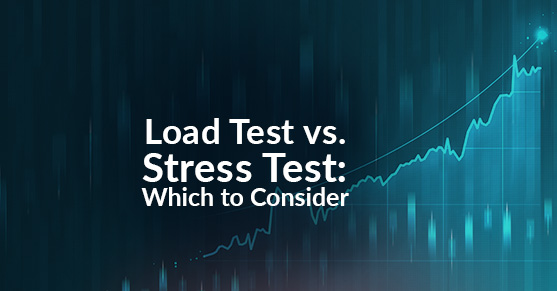What Is A Load Test?
A load test is a process that measures the capacity of a system by applying an increased workload to it. The goal of load testing is to determine how much work the system can handle before it fails. Load tests are performed to ensure that the system can handle peak loads and that it has enough capacity for future growth.
Load tests are also used in capacity planning, where they help calculate future requirements by modeling various scenarios and extrapolating from the results. Load tests are often conducted with software tools like Apache JMeter, Gatling, etc.
Why Do You Need To Load Test?
The main goal of a load test is to measure how many concurrent users the system can handle so that we have considered infrastructure limitations and other environmental factors.
Hence, this testing is applicable for all applications with their major features. Due to this, load testing will also be more complex yet effective. Load tests are also carried out by conducting tests at different software components separately. (For instance, the end-to-end eCommerce system can be divided into UI, Microservices, Database layer, etc., which needs to be tested for their performance based on their respective SLAs).
Benefits of Load Tests
- Minimizes the cost of failure for companies and organizations
- Improves software scalability and performance
- Guarantees greater customer satisfaction
- Reduces the risk for system downtime and failure
- Helps identify inefficient codes, identifies hidden bugs in the system
- Facilitates simultaneous web app usage by multiple users
When Should You Use Load Testing?
Let’s take an example of an eCommerce application. An enormous number of products will be sold at a given interval of time and hence testing the performance of the software is very crucial to ensure that the reliability of software is not compromised and helps the client sustain in the market.
What is a Stress Test?
A stress test is a test that is performed to determine the stability of the system under a particular amount of stress. Stress tests are used to measure the performance of a system under an extreme load. A stress test is designed to push the limits of a system and usually runs continuously.
When there are many users accessing the system simultaneously and exceeding the server’s resource capabilities, then stress testing is performed to check whether the software reacted properly and predictably. The test results are later analyzed to identify the root cause of data loss or memory leaks. CPU usage is also monitored in this type of testing.
Why Do You Need to Stress Test?
A stress tests main goal is to estimate the software’s strength and error handling abilities under a hefty load and guarantee that the application does not crash under overbearing conditions.
Benefits of Stress Tests
- Finds bugs and some synchronization problems
- Detects Interlock flaws (mutually dependent functions)
- Requests priority issues
- Reveals loss of resource problems
- Catches memory leaks
- Identifies system’s corruption and loss
When Should You Use Stress Testing?
Let’s again take an example of eCommerce website. A company launches its big billion sale, and a discount is allowed on all products. So, before launching a big billion sale, the company wants to test the server’s capabilities to handle the heavy traffic.
The below table shows the difference between load testing and stress testing.
| Load Test | Stress Test |
| We assess if the software functions as intended under a given load. | We assess if the software functions as intended under maximum pressure. |
| We determine the app’s operational capacity. | We determine the app’s error tolerance and security outages. |
| Load stays within the expected threshold | Load/pressure is beyond the expected threshold. |
| Testers’ logic is to establish an acceptable efficiency of the system. | Testers’ logic is to establish the max efficiency of a system. |
| This can be carried out as soon as the load bearing receiver, capacity, or storage is developed and integrated into the software | This can be carried out as soon as any operational script is written. |
| Checks require simulating the external data/ loads effects coming into the software | Checks require simulating both internal and external operations’ effects coming in or out of the software |
| We assess if the software functions as intended under a given load. | We assess if the software functions as intended under maximum pressure. |
Conclusion: Load Testing Comes First and Stress Testing Comes Second. Here’s Why:
Both load and stress tests are essential for any application although it is sometimes given the least priority. With respect to the order of the tests, the load test should be carried out initially because it helps to identify the problems that can be fixed before they become major issues during the stress test. It gives a clear picture of what to expect from the stress test.
If you have any questions or want more information feel free to reach out or visit our Testing Center of Excellence.

